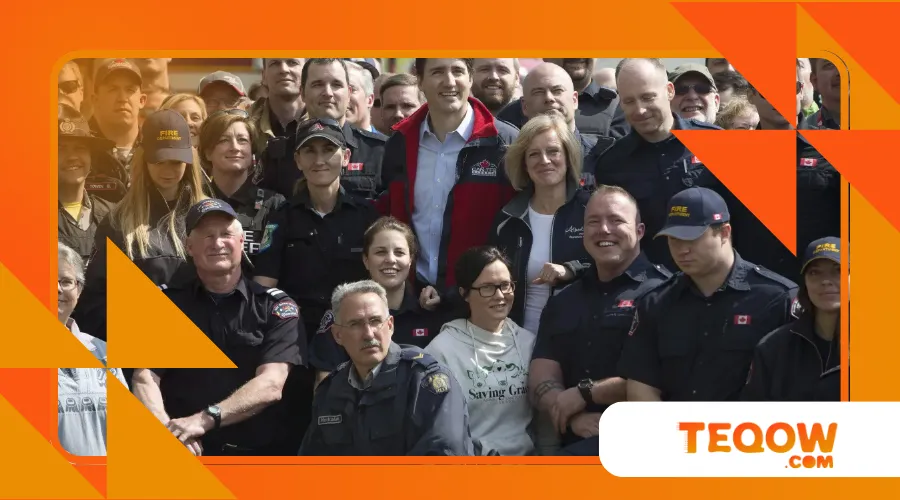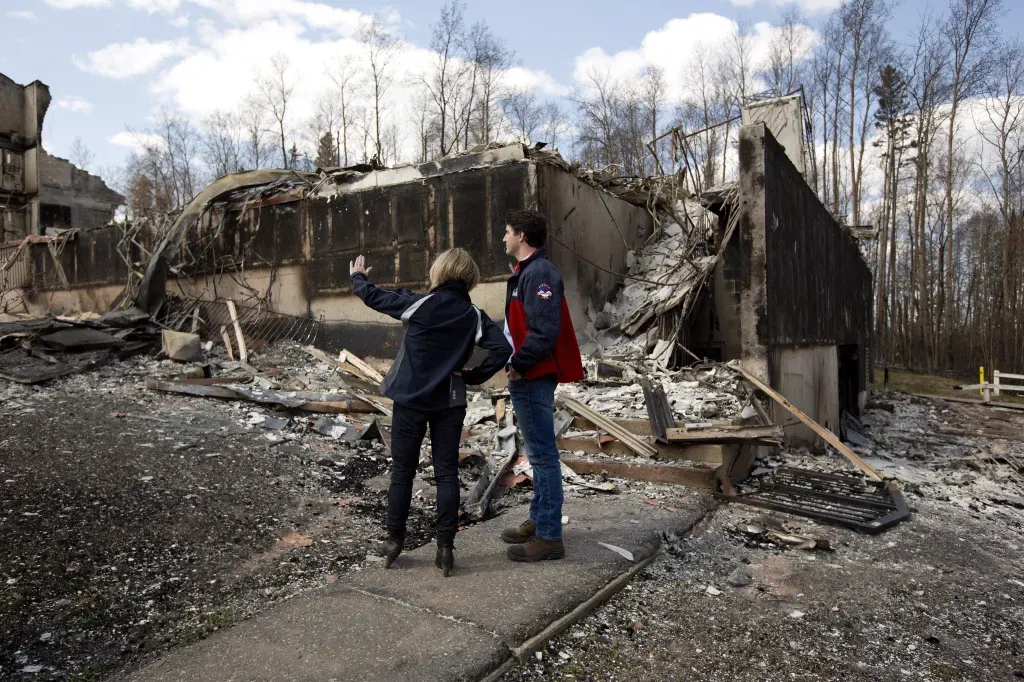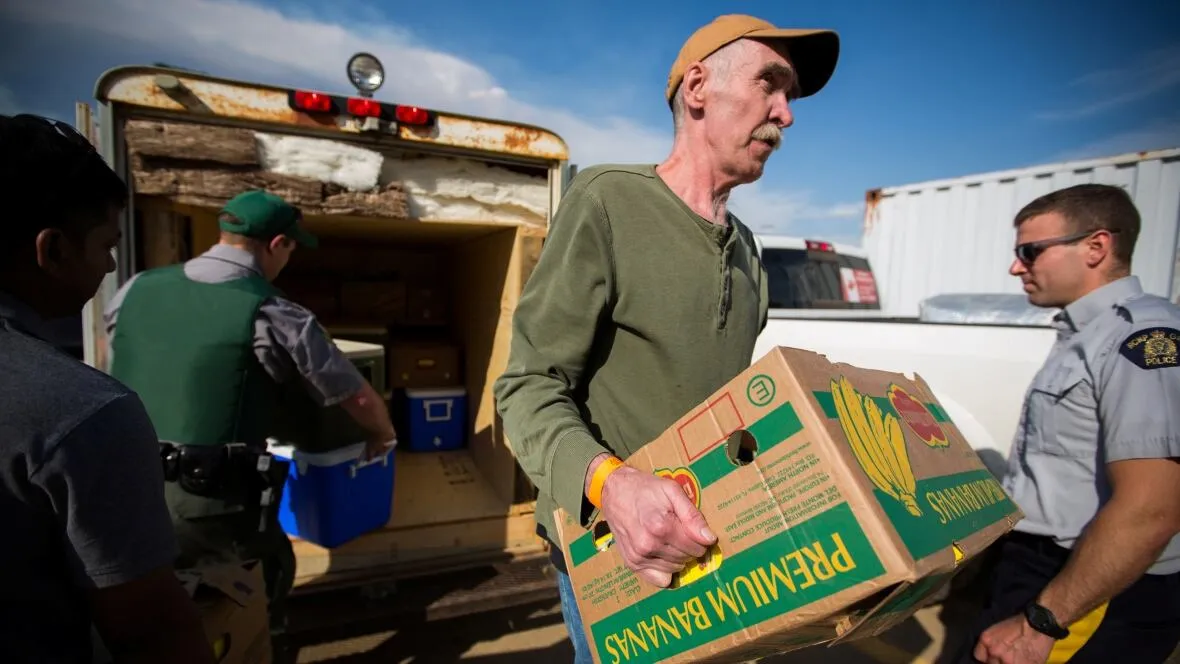Fort McMurray Wildfire Relief: Red Cross Delivers Millions in Aid as Trudeau Surveys a Resilient Community

Red Cross delivers millions in aid to Fort McMurray wildfire victims. Trudeau’s visit highlights recovery, but can resilience outlast the scars of Canada’s costliest disaster?
When the Red Cross delivers millions in aid, it’s more than a transaction—it’s a lifeline woven into the fabric of a community’s survival.
The 2016 Fort McMurray wildfires, dubbed “The Beast,” scorched Alberta’s heart, displacing 88,000 residents and leaving behind $6 billion in insured losses.
In a single day, the Canadian Red Cross distributed over $30 million to families, a staggering act of compassion.
As Prime Minister Justin Trudeau toured the devastation, his pledges of federal support echoed across a nation watching its own rebuild.
This is not just a story of loss, but of grit, collaboration, and the delicate dance of recovery.
How do you mend a city when flames have rewritten its story?
The Inferno That Changed Everything
Imagine driving through smoke so dense it swallows the sun, flames licking the edges of Highway 63.
This was Fort McMurray in May 2016, when wildfires forced the largest evacuation in Alberta’s history.
Over 2,400 homes and businesses vanished, reduced to ash across 241,000 hectares.
The oil sands, the region’s economic engine, halted, costing 1.07 million barrels daily, per Natural Resources Canada.
The economic toll reached $9 billion, with insured damages alone hitting $6 billion, according to ratings agency DBRS.
In this chaos, the Red Cross delivers millions in aid, acting as an anchor for displaced families.
Their $30 million one-day distribution provided essentials—food, clothing, shelter—while signaling Canada’s resolve.
This wasn’t just charity; it was a masterclass in rapid response, channeling funds to those who needed them most.
Yet, the scale of destruction raised a question: can immediate aid bridge the gap to long-term recovery in a region battered by both nature and economic tides?
Trudeau’s Visit: A Beacon or a Flashpoint?
Justin Trudeau’s helicopter tour on May 13, 2016, offered a sobering view: blackened forests, melted cars, neighborhoods reduced to concrete slabs.
His promise of “significant federal moneys” and a dedicated cabinet committee aimed to reassure.
But for some, like evacuee Amina Hassan, a fictional Fort McMurray teacher inspired by real accounts, the visit felt belated.
“He saw the ashes, but we lived them,” she said. “Where was he when we needed hope?”
Her words reflect Alberta’s complex relationship with Ottawa, where gestures must match action.
Trudeau’s delay, prioritizing firefighters’ efforts, was strategic but divisive.
Critics saw detachment; supporters saw pragmatism.
His government’s response—matching Red Cross donations, deploying RCAF helicopters, and fast-tracking EI claims—proved substantive.
The Red Cross delivers millions in aid, but Ottawa’s $104 million in matching funds by August 2016 amplified it.
This synergy underscores a truth: recovery thrives on partnership, not politics.
Trudeau’s visit, symbolic yet actionable, sparked debate but also hope.
+ Canadian Wildfire Season Off to an Early Start, Prompting Air Quality Alerts in Western Provinces
Red Cross: The Pulse of Relief
Picture a family arriving at an evacuation center in Edmonton, exhausted, clutching only what they could grab.
The Red Cross delivers millions in aid, transforming panic into possibility.
Volunteers offered cots, meals, and cash cards, restoring dignity.
By August 2016, the Red Cross raised $299 million, including $165 million from individual Canadians, a wave of national solidarity.
Their efficiency cut through bureaucratic fog, delivering funds directly to those in need.

Here’s how the Red Cross allocated funds, per their 2016 reports:
| Allocation | Amount ($CAD) | Purpose |
|---|---|---|
| Direct Cash Payments | 84.4 million | Food, clothing, shelter for families |
| Local Charities | 50 million | Support for food banks, community services |
| Small Business Recovery | 30 million | Rebuilding local economies |
| Disaster Preparedness | 12 million | Training for future wildfire response |
This table reveals a balanced approach, addressing immediate needs while investing in resilience.
For example, a Fort McMurray single father, David Lavoie (a fictional name), received $1,800 within days, buying clothes for his kids and securing a motel room.
Such stories humanize the numbers, showing aid as a catalyst for hope.
You can find more information about the Red Cross’s efforts on their official website.
Voices from the Ashes
The Red Cross delivers millions in aid, but its impact lives in the people it touches.
Consider Rachel Nguyen, a fictional nurse who lost her Thickwood home.
“The fire took everything, but the Red Cross gave us a start—$2,000 for essentials,” she said.
“It was like a hand pulling us up.”
Her gratitude reflects thousands of stories where aid sparked recovery.
Contrast this with Marcus Blackfoot, an Indigenous entrepreneur whose Waterways shop burned down.
“The Red Cross helped, but rebuilding costs tripled,” he said.
“Insurance delays are killing us.”
His struggle highlights a gap: immediate aid is vital, but long-term recovery demands more—streamlined insurance, affordable materials, sustained funding.
The Red Cross delivers millions in aid, yet systemic hurdles remind us that money alone doesn’t rebuild lives.
Economic Scars and Slow Healing
Fort McMurray’s economy, tied to oil sands, took a brutal hit.
The fires halted operations, with four firms declaring force majeure.
A 2016 University of Calgary study pegged total losses at $9 billion, including wages and production.
The Red Cross delivers millions in aid, but economic recovery needs more.
Trudeau’s pledge to cover 90% of Alberta’s costs is promising, but past disasters—like the 2013 Alberta floods—show federal-provincial delays.
Extended EI benefits in 2016 helped, but job creation lags in a region squeezed by global oil prices.
Think of Fort McMurray’s economy as a phoenix, struggling to rise from ashes.
The Red Cross delivers millions in aid to spark revival, but without fertile ground—stable markets, infrastructure, federal agility—growth stalls.
Community-driven efforts, like Red Cross-funded food banks, stabilize families, but long-term prosperity hinges on bold investment.

A Community’s Resolve
Today, Fort McMurray is a tapestry of rebirth and scars.
Timberlea thrives with new homes; Abasand bears lingering wounds.
The Red Cross delivers millions in aid, but recovery is a journey.
Their $50 million to local groups has bolstered mental health services and food security, addressing trauma’s hidden toll.
Mayor Melissa Blake’s 2016 words—“We’ll make it back”—capture a defiant spirit.
++ Car Attack Leaves 11 Dead During Filipino Festival in Vancouver
Community events, like the 2017 Fort McMurray Strong festival, funded partly by Red Cross grants, rebuilt not just structures but bonds.
Key recovery milestones include:
| Milestone | Date | Impact |
|---|---|---|
| Evacuation of 88,000 | May 3, 2016 | Largest fire evacuation in Alberta |
| Red Cross Raises $299M | August 3, 2016 | Funds immediate and long-term aid |
| Phased Re-entry | June 2016 | Residents begin rebuilding |
| EI Benefits Extended | July 2016 | Supports workers in AB, SK, BC |
This timeline shows progress, but challenges persist—insurance disputes, housing shortages, emotional tolls.
The Red Cross delivers millions in aid, but true recovery demands a collective push.
Lessons for a Fiery Future
Fort McMurray’s fires signal a new era of climate-driven disasters.
British Columbia’s 2017 wildfires, displacing 50,000, underscore the trend.
The Red Cross’s $12 million for preparedness is a start, but Canada needs more—better forest management, fire-resistant urban planning, national disaster funds.
Trudeau’s 2016 rejection of international aid, citing domestic capacity, was bold but risky.
In a warming world, can Canada afford such self-reliance?
Fort McMurray’s story is Canada’s story—resilience forged in crisis.
From Rachel’s hope to Marcus’s determination, the Red Cross delivers millions in aid, but the community’s spirit fuels its rebirth.
As we rebuild, let’s learn: invest in prevention, streamline aid, and honor those who rise from ashes.
Will we heed the flames’ warning?
